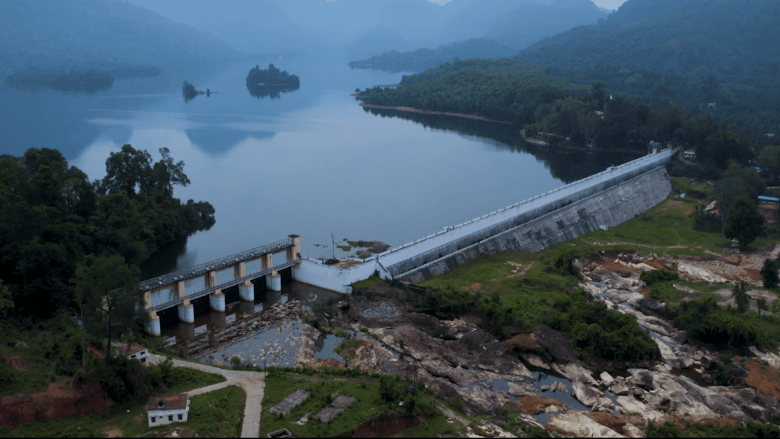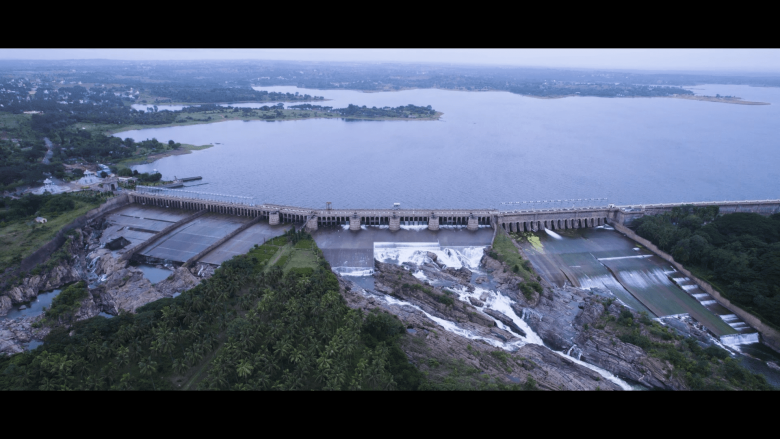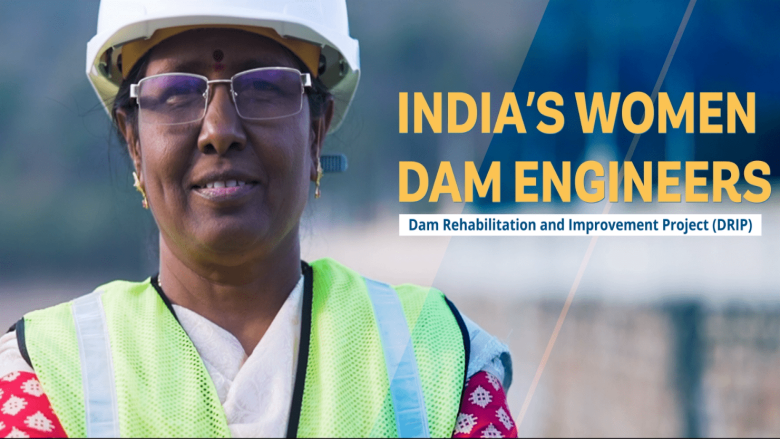Dam Rehabilitation & Improvement Project - Restructuring and Additional Financing
Protecting People & Property: The World’s Largest Dam Rehabilitation Program
In the world’s largest dam rehabilitation program, the World Bank is helping India cope with the increasing impacts of climate change by modernizing over 500 large dams across the country. Using the latest technology, each dam is being modernized and strengthened with tailor-made solutions. All dams are also being provided with an Emergency Action Plan, developed in consultation with a range of stakeholders, including the local community. These plans are shared publicly so that everyone knows what to do in an emergency. In addition, the project is enabling India to create a new pool of dam professionals by developing one of the world's first post graduate courses in dam safety.
Date: July 4, 2024Type: BriefLanguage: English
#WomenAtWork: Kerala's Women Engineers
Women engineers are managing dams and canals in Kerala, earlier seen as a male-only domain
Date: April 20, 2020Type: Feature StoryLanguage: English
World Bank Signs Agreement to Provide Additional Funding of $137 million to Enhance Dam Safety in India
The World Bank, Government of India and representatives of 5 state governments of India and implementing agencies today signed the loan agreement for additional financing of $137 million for the Dam Rehabilitation and Improvement Project (DRIP).
Date: March 8, 2019Type: Press ReleaseLanguage: English
World Bank Approves Additional Funding to Enhance Dam Safety in India
The World Bank Bank approved additional financing of $137 million for the DRIP that will help rehabilitate and modernize over selected large dams in the states of Karnataka, Kerala, Madhya Pradesh, Odisha, Tamil Nadu and Uttarakhand.
Date: March 1, 2019Type: Press ReleaseLanguage: English
India: Dam Rehabilitation and Improvement Project - Restructuring and Additional Financing
The project aims to improve the safety and operational performance of selected existing dams in the territory of the participating states.
Date: February 28, 2019Type: Loans & CreditsLanguage: English
India’s Women Dam Engineers
Not many people know that India’s women engineers are a critical part of the country’s efforts to upgrade its large dams, especially in the southern part of the country. While handling such huge volumes of water can be a daunting task, these women take the job in their stride - managing, operating and rehabilitating these complex structures with confidence and ease
Date: January 23, 2024Type: VideoLanguage: English

India Implements the World’s Largest Dam Rehabilitation Program
In the world’s largest dam rehabilitation program, the World Bank is helping India cope with the increasing impacts of climate change by modernizing over 500 large dams across the country. Using the latest technology, each dam is being modernized and strengthened with tailor-made solutions. All dams are also being provided with an Emergency Action Plan, developed in consultation with a range of stakeholders, including the local community. These plans are shared publicly so that everyone knows what to do in an emergency. In addition, the project is enabling India to create a new pool of dam professionals by developing one of the world's first post graduate courses in dam safety. 00:00 Dams in India and impact of climate change 00:29 Modernization efforts: Largest dam rehabilitation program 00:56 Krishna Raja Sagara Dam: Challenges and upgrades 01:38 Servalar Dam: Challenges and individualized solutions 02:33 Idukki Dam: Challenges and comprehensive safety program 03:17 Preparedness for emergencies and action plans
Date: January 23, 2024Type: VideoLanguage: English

Dams Rehabilitation and Crisis Preparedness: India's World Bank-Supported Initiative
Dams provide critical infrastructure for power generation, flood moderation, and water supply for drinking, agriculture, and industrial use. Strengthening their structural safety and operational management will help in building better resilience to handle the effects of climate change. India, in response to these challenges, has taken a proactive approach to dam safety, backed by the World Bank. This commitment is evident through the implementation of the world's largest rehabilitation program. The initiative promotes seamless coordination among agencies and empowers downstream communities through comprehensive training and advanced early warning systems. Explore the intricacies of individually tailored Emergency Action Plans, which meticulously outline roles and responsibilities during crises like floods and earthquakes. Moreover, how local communities play a vital role, sharing essential knowledge for an effective disaster response.
Date: January 23, 2024Type: VideoLanguage: English
